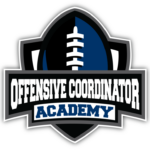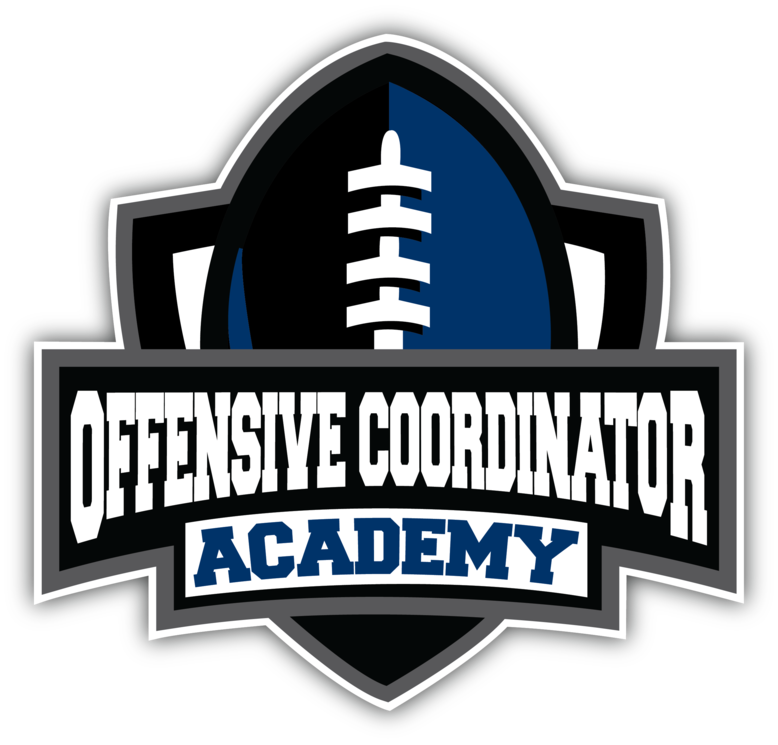Inside zone is one of the most fundamental plays in modern football. Stemming from the triple option it has evolved into the building blocks for some of the most explosive offenses in the country at any level. But to adapt this play in any situation, understanding how to evolve it as an adjustment can be the difference between a successful run play and a non-successful one.
In my opinion the mark of a great offensive line coach is building his players tool box to allow them to succeed in any situation thrown at them. When blocking inside zone, adding the fold block to an offensive lines’ tool box can be one of the most beneficial wrinkles and adjustments in any game.
The fold block rules are relatively simple for an offensive lineman to apply and master.
When to Use the Fold Block
The first rule is understanding when and how to use it. For our offensive line we first want to make sure the fold happens within the combination block. When we talk about folding the nose guard, we know that generally speaking, the center and guard are going to be working together to block the down nose guard to the near side inside linebacker.
Second rule is we want to see if we have the angles. Math wins football games. Whoever has the more points at the end of the game wins. But in a more focused model, the lineman with the better angle and leverage wins. If we have a good angle for the down block combined with how the defensive lineman plays it could be viable. We want to see a defensive lineman either on the nose or have a heavy shade on the nose on the interior of the guard. In addition the offensive lineman needs to see if the puller can get to the linebacker. If the linebacker is in the framework of the guard’s body, it’s safe to assume that the pulling guard will be able to take an angle to either man up the linebacker or run him and create a cutback lane.
The third rule is using the fold block in the right situation. Situations that we would use a fold block would be if that nose guard is tight to the center and directly penetrating forward to disrupt the zone path or if that nose guard is a player that is going to be difficult to block schematically based on his talents and level of play. Another situation is if we need a changeup. If inside zone is being ran for the majority of the game, adding the fold block in here and there will force the defense to be more honest, and may give us an advanced crease to hit on the interior of the defense.
The Down Block
With all wrinkles in a play, the technique is huge. The down block in a fold block alteration is the most important aspect because the nose guard can disrupt a play with two steps of vertical penetration. When we down block on the nose guard in a fold block, we need to understand the fundamental concept of the winning angle. The winning angle for us is that first step to seal off the ability for the defender to back door the down block. That step cannot be uniform. Offensive lineman’s body are different, and defensive angles are different. So that winning angle needs to point towards the backside shoulder with a more lateral final step placement.
The second aspect of the down block is the first hand placement and sinking the second step. Like a shot-putter throws his arm forward and slightly up, we want to drive that hand opposite the step right under the defensive lineman’s near shoulder pad. Simultaneously, we want to close the door with the second step making almost a ‘T’ with our body and the defensive lineman’s body. That step needs to be powerful so that shot-put action jab to the defenders near shoulder pad generates enough power to knock the defensive lineman off his track.
The third aspect is the second hand. That hand needs to be shot to maintain winning leverage. Knowing that every player and play are different, that can’t be a set in stone placement. We want that hand to brace the drive, whether it be on the hip, side of the shoulder pad, or another spot of functionality. Now, knowing that the center has to snap, depending on the direction of the play and if he is the puller or down blocker, he can dictate which hand goes where. If the hand that he snaps with is the “shot-put” hand, he will need to deliver his off hand as the second hand in a winning placement and then drive the shotput hand next. The footwork won’t change, but the one-two punch will.
The Pull
The pull is the next aspect. We teach different kinds of pulls for each situation but all have the same base coaching points. When teaching the pull here, we want to relate it almost to the power skip pull. Knowing it’s not going to be as deep or as long it can’t be taught as the same as the power pull. Whether it’s the guard or the center pulling the technique doesn’t change at all.
First, we want to explode off the foot away from where we are pulling, but push towards where we are pulling. We want to focus the force on the inside of our foot, pushing slightly out and up to gain enough depth to get around the down block but focus of getting that width to get us on the path where we can have a good starting angle towards the linebacker in the combo. As we drive off that back foot, we want to catch with our near foot.
It seems like a simple task, but we want to focus on where we point our toe. We want that toe to point towards where the linebacker will be going. It will set us on an immediate angle as if we are going for an uncovered second level block in inside zone. That third step can be our adjusting step. Bringing that second foot is how we will square our body on the angle we need to be on. When we get on our angle, we want to move quickly aiming to where the outside shoulder of the linebacker will be if he was flowing. The reason we want to aim there is because we can’t allow him to beat us across our face. If he does decide to undercut the second level block we can use almost a seal technique to wall him inside to create the natural crease.
If we are going to meet the linebacker we want to fire our hands in an upward motion at his chest plate focusing on his play side shoulder and drive him into the bench. If we are in a situation where we need to fold him into the backside of the play we need to stop out forward momentum and turn towards the defender and drive him into the down block. That would require the third step to have a sharp directional change, using out backside arm to help swing our body, and use the fourth step to collide the linebacker and run our feet.
There are some situations where we would stay on our zone path and block the next available defensive player, but that is a game time feel adjustment to be made in between drives based on how out inside zone is hitting. If we are bouncing a lot of our side zone that week we may take the path to the next available player.
Drilling
Like all great things in football, after the technique it taught drilling is where mastery is found. We want to focus on the first aspect of the fold block. Drilling the down block is something that we need to master going into the first few days of the season. It’s the focal point of all gap scheme and this zone scheme variation. Drill work does not have to be overly complicated. Reinventing the wheel isn’t always the best option when teaching such a fundamental aspect of football.
When we drill down blocks it’s as simple as the offensive lineman partnering up and building through speed and progression. We want to start by blowing a whistle at each stop: the first step, the second step (shot put motion and t angle), second hand placement, run through contact.
As they master each aspect of this we can pull back on the whistle progression. Same idea with the pull: the initial pull, catch angel, third step, and second level path including a variation of blocking a back door linebacker).
Once the two components are mastered then we can put them together. The key to drilling is making it as realistic as possible. Each week scheming the drill for the coaches’ end to make it as game like as possible. For this variation to be in an offensive lineman’s tool box it’s vital that it’s tailored to each opponent.
Conclusion
Allowing for an offensive lineman’s tool box to grow is vital to the success of any offense. The competence and trust of the coach and player have to be at an all-time high in order to feel comfortable to allow such game time variations to be called by a player. It is on us as coaches to teach the rules, the procedure, and the technique and raise our players level of football competence so that we can succeed as a team.


